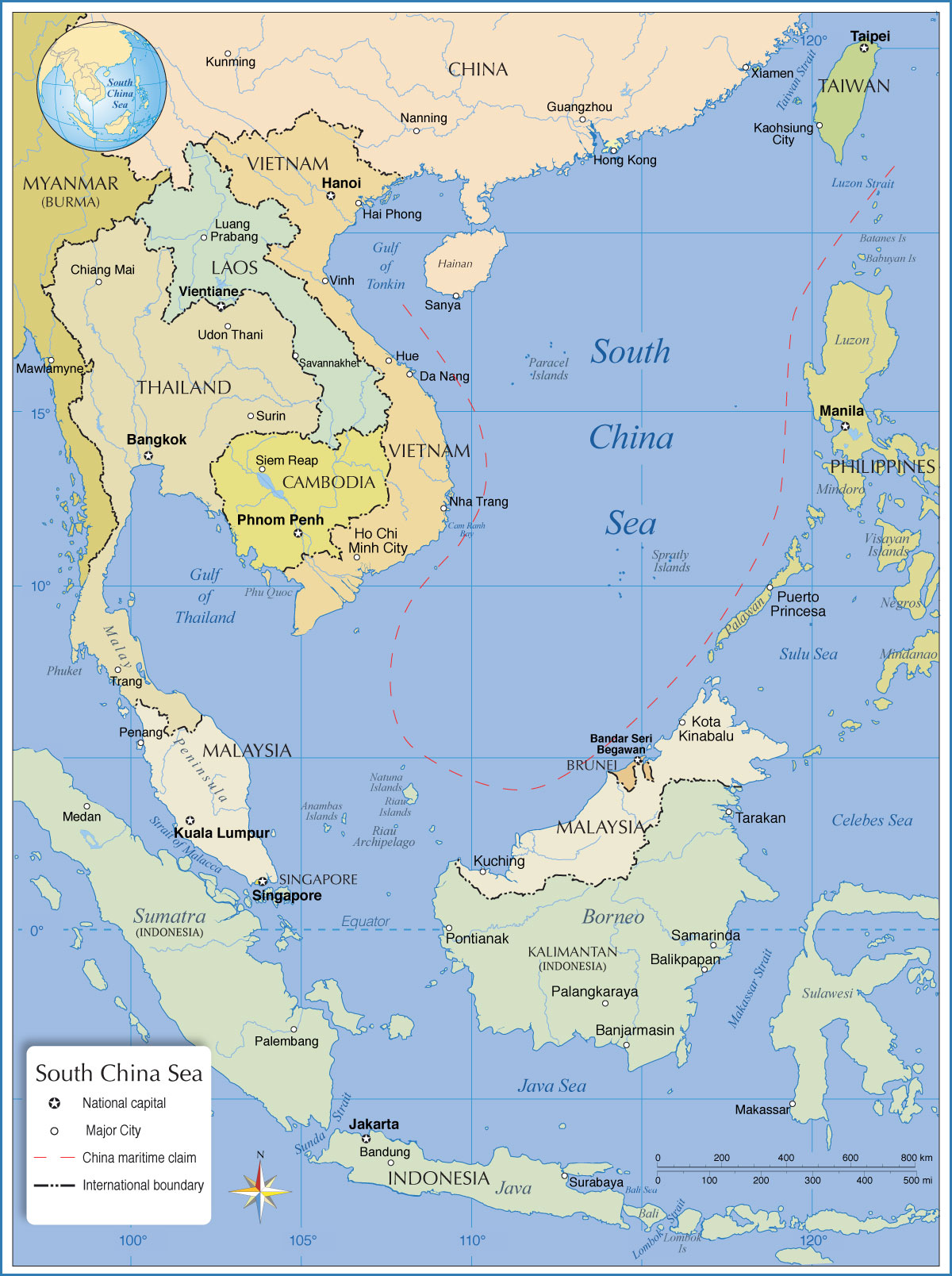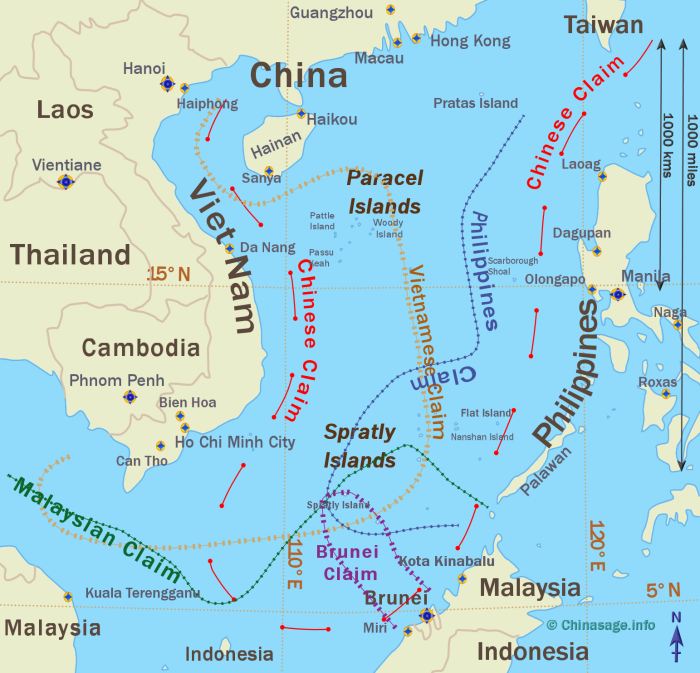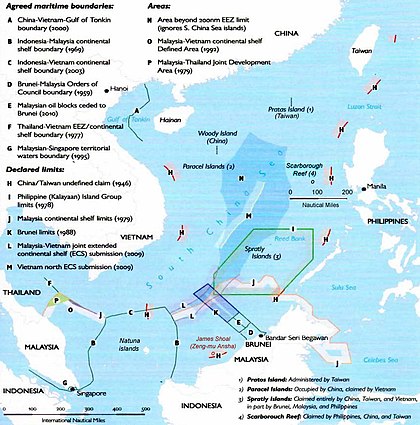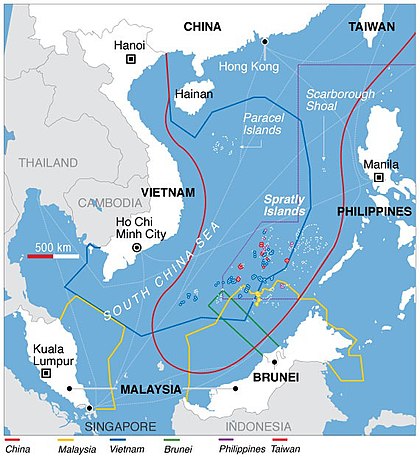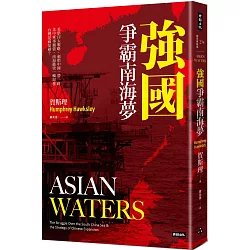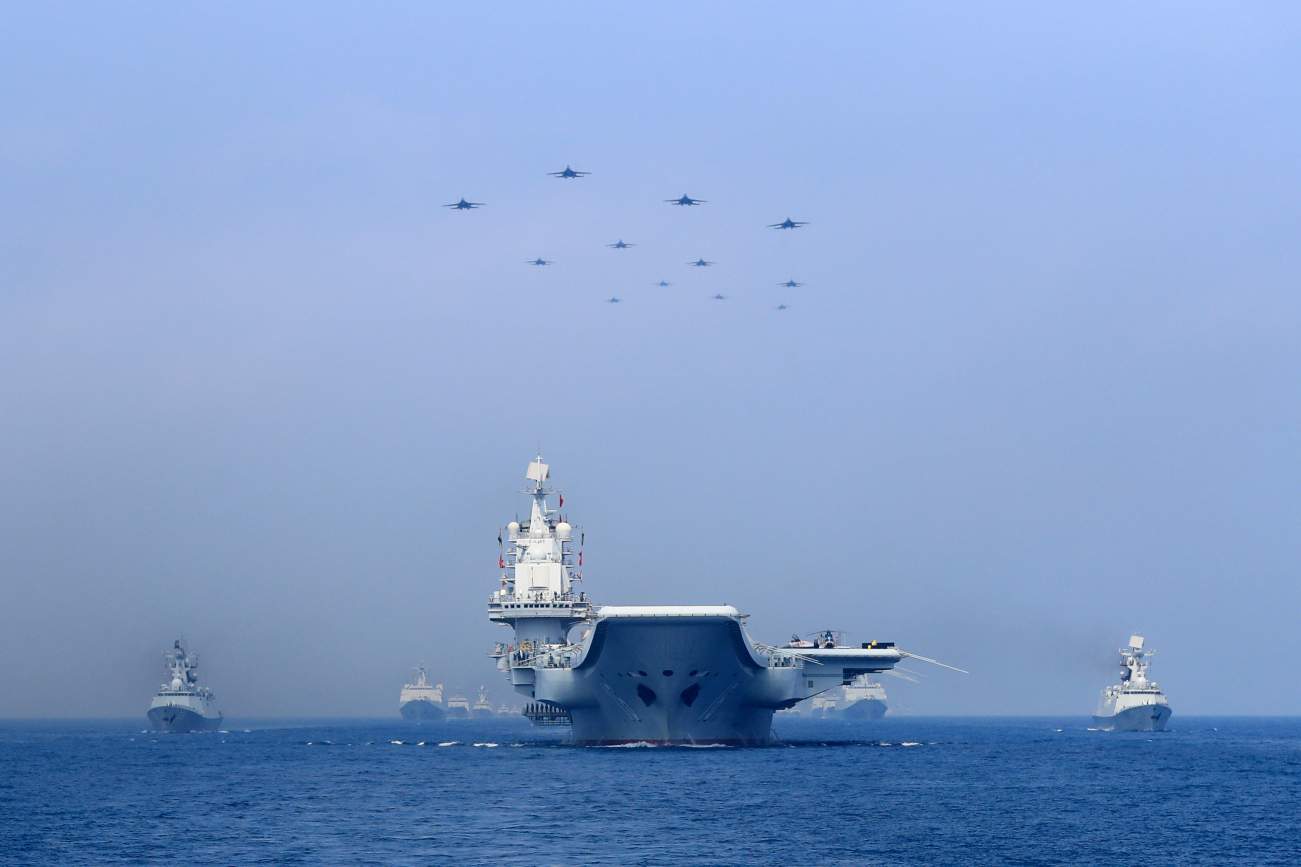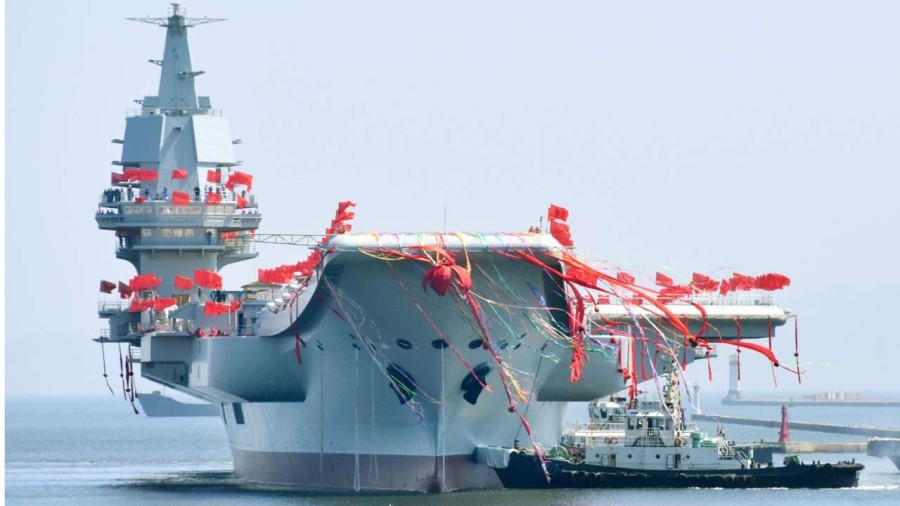 
 字體:小 中 大
字體:小 中 大 |
|
|
|
| 2019/10/19 12:51:23瀏覽666|回應0|推薦7 | |
《強國爭霸南海夢》. 美國人始終未簽署國際海洋法,但是霸道主張在中國南海自由航行,自從美國執行重返亞太的政策以來,明確顯示出其澈底的失敗,在川普總統的新政策下,美國的確是有所收歛,中國南海表面上風光明媚,但是依舊,波濤洶湧,暗潮洶湧,中國與美國扔然互不侵犯? 明爭暗鬥? 北約某大國際戰略研究所指出,隨者時間的競賽,有利的一方始終靠近中國,因為整體上的中國南海防空管制識別區的建設,已經接近90%以上的完成,換句話說中國將會選擇在適當的時機,宣佈劃分中國南海防空識別區的使用計劃.
在筆者之前的 hsr 123 blog.的分析報導中,描述的東沙群島,南沙群島及西沙群島,各自掌握及管理應有的防空識別區,已經透露出端倪,北約軍事情報專家表示,中國極為可能在202103,公告實施中國南海防空識別區的管制,因為那時期也就是說美國將在中國南海舉行大規模的實兵實彈演習,以考驗中國南海防空識別區的實際效能如何?
由於國際局勢向來是錯綜複雜,詭譎多變,無論是中國與美國的貿易戰,中東地區伊朗與敘利亞的局勢變化,都牽涉到中國與美國的戰略利益,美國在財政赤字日益增加的情況下,扔然不斷的增加兵力,前往中東地區及中國南海耀武揚威的耍把戲,如此一來202103以後,即可在中國南海,按照中國的遊戲規則,自由的進出南海,否則就無所適從,無需此行喇.
Asian Waters: The Struggle Over the South China Sea and the Strategy of Chinese Expansion.
In the sphere of future global politics, no region will be as hotly contested as the Asia-Pacific, where great power interests collide amid the mistrust of unresolved conflicts and disputed territory. This is where authoritarian China is trying to rewrite international law and challenge the democratic values of the United States and its allies. The lightning rods of conflict are remote reefs and islands from which China has created military bases in the 1.5-million-square-mile expanse of the South China Sea, a crucial world trading route that this rising world power now claims as its own. No other Asian country can take on China alone.
They look for protection from the United States, although it, too, may be ill-equipped for the job at hand. If China does get away with seizing and militarizing waters here, what will it do elsewhere in the world, and who will be able to stop it?In Asian Waters, award-winning foreign correspondent Humphrey Hawksley breaks down the politics―and tensions―that he has followed through this region for years. Reporting on decades of political developments, he has witnessed Chinas rise to become one of the worlds most wealthy and militarized countries, and delivers in Asian Waters the compelling narrative of this most volatile region.
Can the United States and China handle the changing balance of power peacefully? Do Japan, the Philippines, South Korea, and Taiwan share enough common purpose to create a NATO-esque multilateral alliance? Does China think it can even become a superpower while making an enemy of America? If so, how does it plan to achieve it? Asian Waters delves into these topics and more as Hawksley presents the most comprehensive and accessible analysis ever of this region.
全球有幾個區域比得上川普總統倡議的「印太戰略」還要競爭激烈。汶萊、馬來西亞、菲律賓、台灣都宣稱擁有南海部分島嶼主權,中國、越南及印尼,也宣稱擁有貿易航道及部分島嶼控制權。有些國家甚至派遣部隊駐守在這些海島或珊瑚礁,導致摩擦逐年升溫,但其中沒有任何國家能單獨與中國分庭抗禮。
目前台灣僅在南沙群島掌控太平島,而中國控制5個島礁,越南則佔有27個,「我想中國會有佔領計畫,但是鎖定台北,且(太平島)這邊有足夠防禦能力」。面對南海主權爭議,美國則是派遣軍艦通過該海域,主張航行自由,賀斯理認為,南海區域航線仍會保持暢通,中國不會關閉該海域航道。 第一探討南海主權爭議和美國決心堅持國際法,捍衛自己的主導地位,保障小國獨立以預防成為中國的附庸。這部分說明軍事前哨的幕後理由,以及對國際航線的威脅。 第二討論東南亞,這些國家環繞南海形成馬蹄鐵狀,現今必須再度在對立的強國之間做出選擇。有的國家已經屈服,其他國家則選擇抗爭。在此地區,優先事項與議題變得模糊不清,每個東南亞國家都必須決定如何與中國打交道。
第三前進南亞,印度將南海爭議視為中國軍事擴張到印度洋,亞洲民主在此也受到考驗,澳洲、印度、印尼、日本、紐西蘭、菲律賓和南韓,是否能夠形成陣線,阻止南海與印度洋落入中國手中? 第四談東亞,中國與日本重演對立的歷史,這種敵對突顯一項事實:即經濟成長與生活水平提高,並不足以掩埋未獲解決的悲慘歷史。東亞還有另外兩個導火線:北韓與台灣。對北京當局而言,北韓是戰略議題,台灣則是情感議題,但攻打計畫始終放在枱面上。 第五是本書結尾,說明東西方價值觀如何學習共存,若選擇衝突將造成何種下場?西方民主國家越來越內縮,中國則不斷向外在世界推銷它的訊息。當今的現況是,我們對愛國主義、種族、忠誠、自我認同、歸屬感的想法已然改變,彼此溝通的方式也已改變。
北約軍事情報指出中國極為可能在2020年以CV17.CBG.山東號航空母艦戰鬥群,駐守中國南海,並以海南島的航母基地做為母港,永遠鎮守中國南海.? 如此一來勢所難免,影響美國在亞太地區的軍事佈署,北約認為美國會增加額外的1組CVN/CBG.以有效的扼阻中國海軍在中國南海的發展.如此一來2020年以後的中國南海勢均力敵的大國海軍爭霸戰又要上演好戲喇? 咱們視目以待.
中國與美國航空母艦戰鬥群將在中國南海對峙或是對決. CHINA CV/CBG vs US CVN/CBG.
CHINA NAVY 17CV/CBG.
US NAVY CVN/CBG. Preface
“Whosoever commands the sea commands the trade; whosoever commands the trade of the world commands the riches of the world, and consequently the world itself.”—SIR WALTER RALEIGH, The History of the World,
Walter Burre, London, 1614 Imagine gazing down from the heavens on the continent of Asia as if it were an elegant table laid out for a banquet, an array of dishes displayed for the feast about to take place. In taste, texture and position on the table, each dish contributes to the overall well-being of the diners who are to be satiated with good food and ambience. If one dish is too highly spiced, too lightly cooked, or eaten out of sequence, the banquet will not be the best. It might even fail.
Such is the way in which Europe gazed upon Asia in the nineteenth century, each tine of the fork polished and sharpened to pick at what it wished. Japan followed in the early twentieth century, and after that two rival powers fought over the banquet until the Soviet Union got sick and only America was left at head of the table.
Now China examines the spread that Asia presents, because here is the feast that it needs to own to keep its people secure. To take the top seat, it plans to introduce a new style of table manners with Chinese characteristics that reflect Asian culture. Whereas America—driven by speed, certainty, and determination—cuts through with sharpened steak knives, China approaches carefully, chopsticks raised, taking time to think about which dishes it prefers and how the tastes and delicacies should be blended together. For the moment, at least, it knows the table must be shared between two hosts. But at some stage the other host will have to leave because such is the cycle of life.
The Asian banquet in this current era will predominantly be a seafood feast, so the waiters will replace American-style deep-fried squid with delicacies of sharks’-fin soup and abalone. The new host will decide how many dishes it needs, of what quality and whether the table itself should to be expanded. Where the feast begins and ends can only be loosely defined because Asia is a continent without a cohesive identity.
Its vast shimmering waters stretch from the east coast of Africa to the west coast of America, from the Arctic and the Russian Far East down to the southern tip of New Zealand and to the Antarctic beyond. Its geographical frontiers of mountain ranges, rivers, and oceans are contradictory and clumsy. To the west, Turkey’s narrow Bosphorus strait links the Sea of Marmara with the Black Sea and divides the country in two; Turkey is part Europe and part Asia. To the north, Asia rolls upward through the Himalayas, across the Muslim nations of the former Soviet Union, and into Russia, which itself straddles two continents. To the west it unfolds through India, China, and surrounding countries into Japan and the islands of the Pacific Ocean.
|
|
| ( 知識學習|檔案分享 ) |




